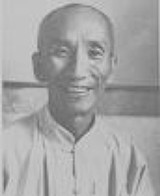“Bruce Lee’s Teacher”

Yip Man 1893 – 1972
“Bruce Lee’s Teacher”
Grandmaster Yip Man, also known as Ip Man, was a Chinese martial artist influential in the development and spread of the art of Wing Chun. He was the first martial arts master to teach Wing Chun openly.
Yip started learning Wing Chun from Chan Wah-shun when he was 7. Chan was 70 at the time, and Yip was Chan's last student.Due to his teacher's age, Yip would learn most of his skills and techniques from Chan's second eldest disciple, Wu Chung-sok. Chan lived three years after Yip's training began. His dying wish was to have Wu continue teaching Yip.
At the age of 16, Yip moved to Hong Kong. One year later, he attended school at St. Stephen's College—a secondary school for wealthy families and foreigners living in Hong Kong.
When Yip was 24, he served as a police officer in Foshan. Between 1937 and 1941, he served in the army during China’s effort to repel the Japanese invasion. He returned to his family in Foshan during the years of the Japanese occupation. Times were hard, and the end of the war brought little improvement. Needing to rebuild its ravaged cities and towns, China found itself embroiled in civil war. The nationalist Chinese government recruited Yip as captain of the police patrols for Namhoi County. After the 1949 communist triumph, Yip Man left his two grown sons in Foshan and fled to Hong Kong. Kung Fu master Leung Sheung found him homeless and wandering around at the pier of Macao. He took Yip back to the Restaurant Workers’ Union Hall, where he stayed, and started teaching three students: Leung Sheung, Lok Yu and Cheng Kao. Sheung became a lead instructor, and recalled that Yip rarely taught classes himself preferring to stay at the back of the room supervising, teaching by example and suggestion. His classes consisted of forms practice, trapping hands drills, wooden dummy techniques and free sparring. Initially, Yip Man’s teaching business was poor because his students typically stayed for only a couple of months. Some would attain proficiency in Wing Chun and start their own schools. In 1962, Yip established the Ving Tsun Athletic Association.
In an excerpt from an essay written by student associate Bruce Lee in 1961, Yip advised: “Relax and calm your mind. Forget about yourself and follow your opponent’s movement. Let your mind, the basic reality, do the countermovement without any interfering deliberation. Above all, learn the art of detachment.” Lee attached great significance to the advice, and incorporated it into his practice and meditation.
In the three decades of his career in Hong Kong, Yip would
establish a training system for Wing Chun that eventually spread around the world. Yip Man’s life spawned a popular culture in Hong Kong films, commencing in 2008. By 2013 several films and television dramas were released, with liberties taken for dramatic effect. Yip Man remains a favorite son of moviegoers, television audiences, kung fu students and martial artists.
Yip's legacy is the global practice of Wing Chun. Notable students include: Leung Ting, William Leung Cheung, Hawkins Cheung, Bruce Lee, Lo Man Kam, Wong Shun, and sons Ip Ching and Ip Chun. Yip left behind a written history of Wing Chun, with many artifacts of his life displayed in the "Yip Man Tong" museum in the Foshan Ancestral Temple grounds. Generations of instructors can trace their lineage to Yip, who also influenced other branches of Wing Chun.
